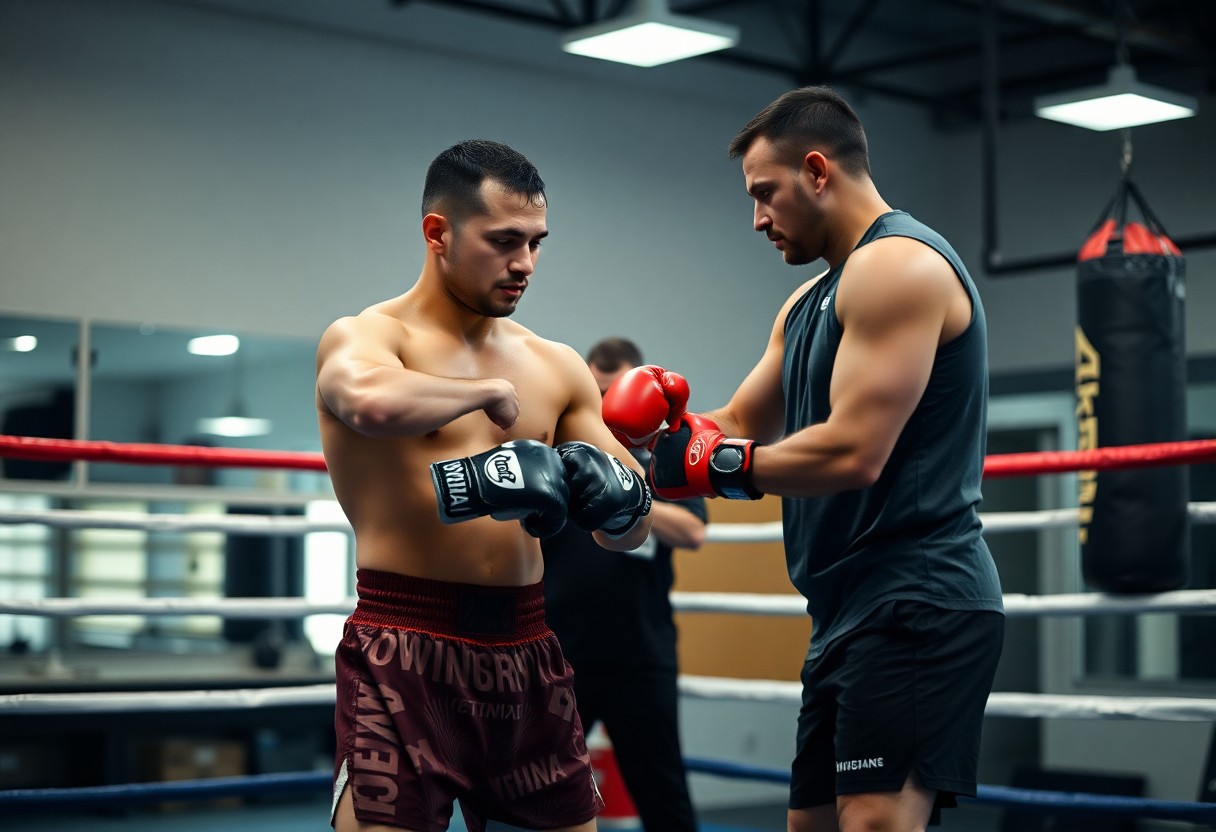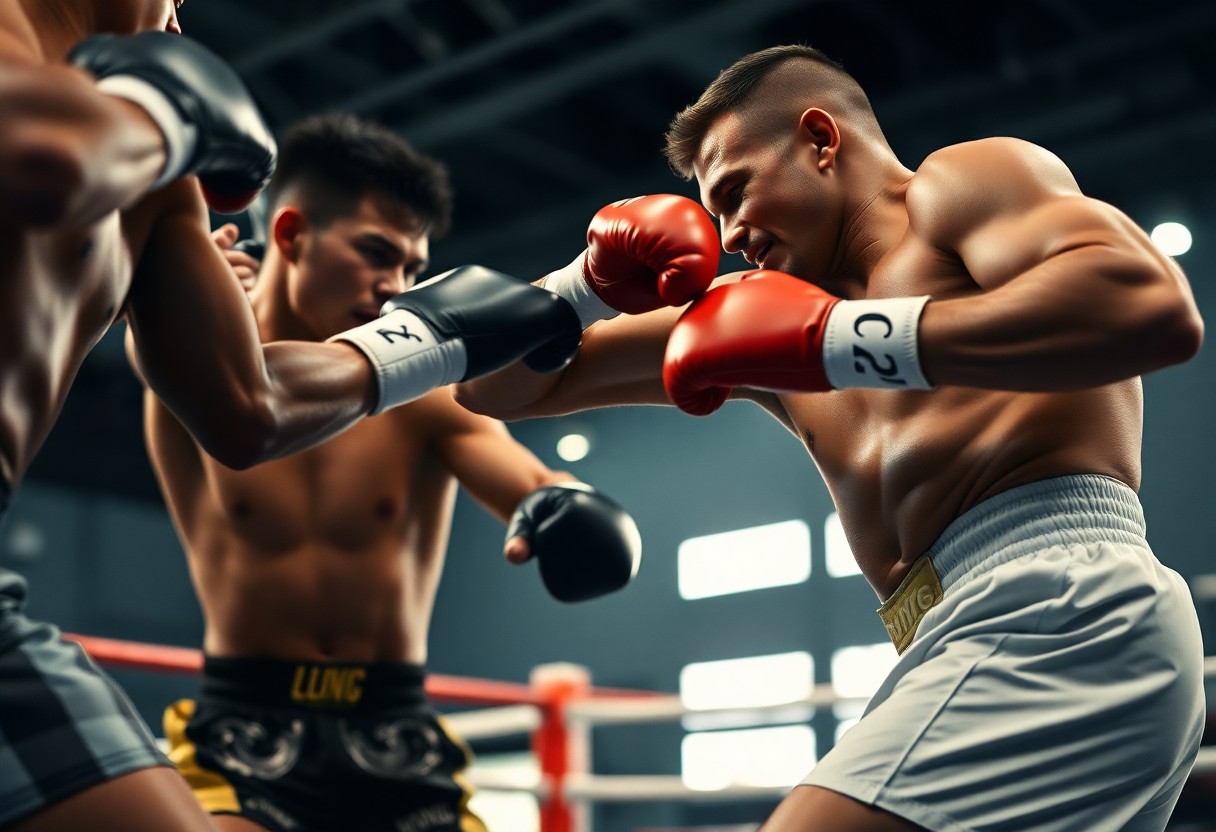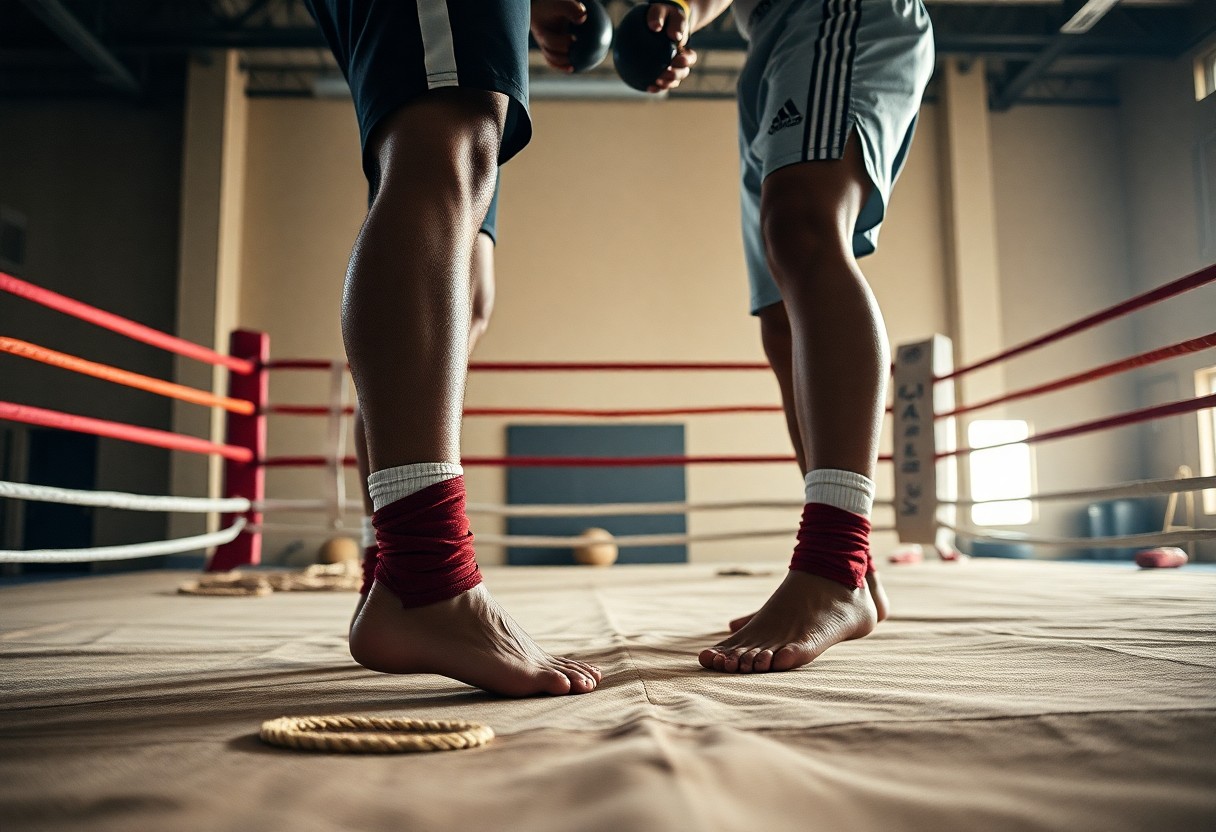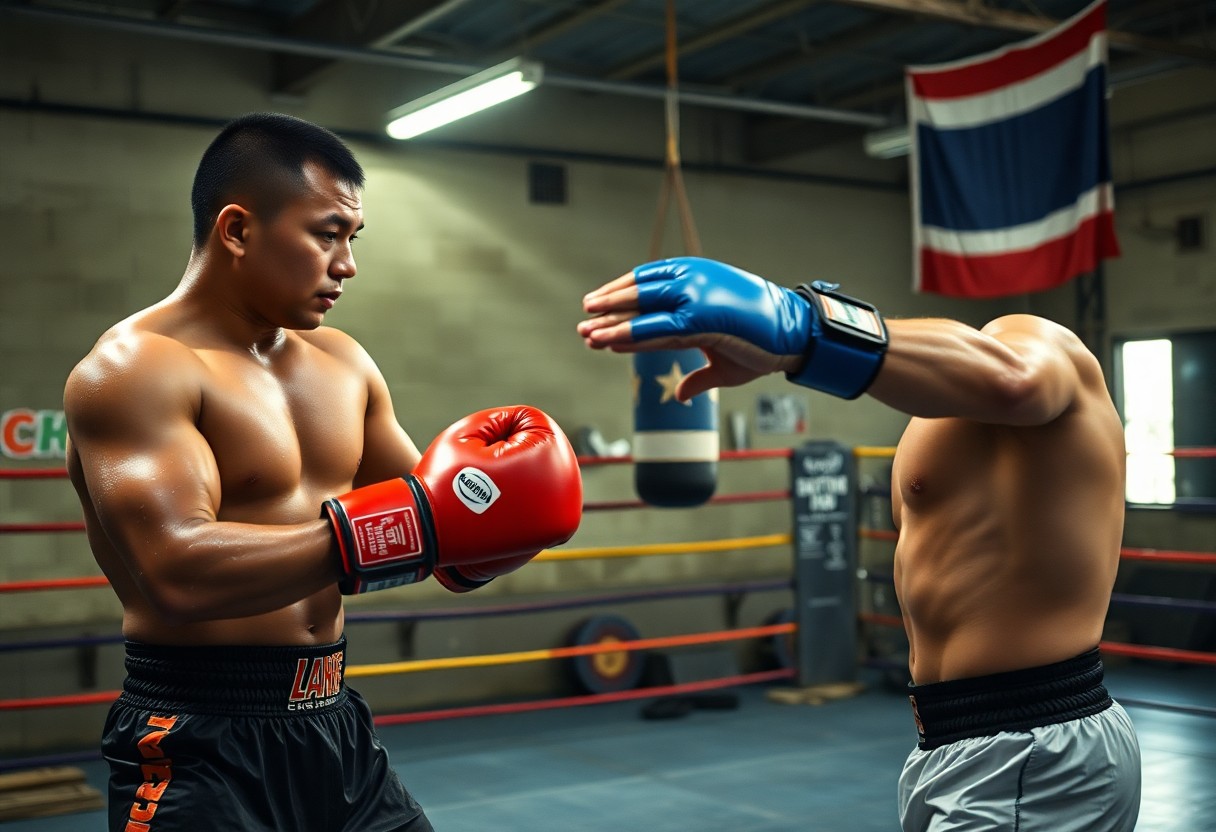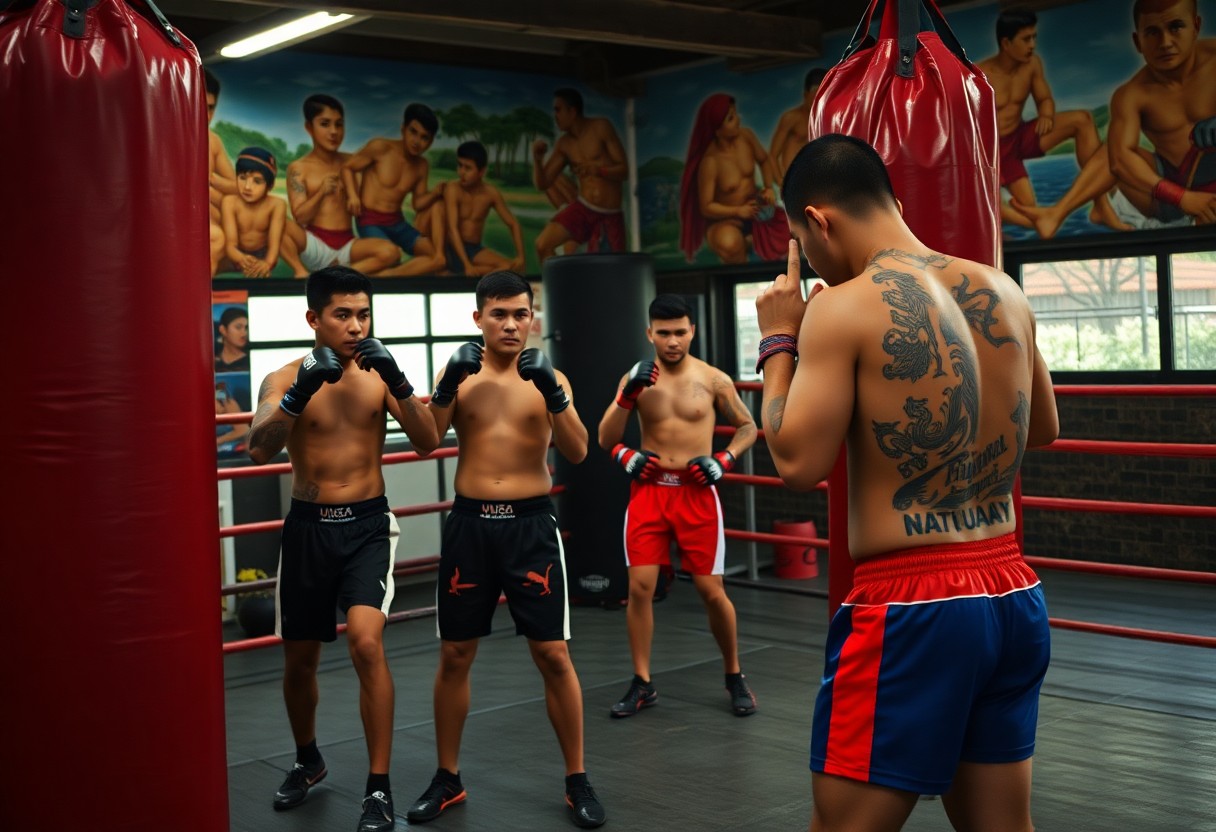
Fighters around the world look to the legends of Muay Thai for inspiration and guidance. These champions have mastered a unique blend of intense training, strategic technique, and mental resilience that has propelled them to the pinnacle of the sport. This guide investigates into the rigorous training regimens, the philosophies that drive them, and the challenges they’ve overcome, offering invaluable insights on how to thrive in the demanding world of Muay Thai.
The Types of Training Methods
Training in Muay Thai encompasses a variety of styles to develop both physical and mental strength. Effective methods include cardio conditioning, technical drills, and sparring. Each approach targets unique aspects of a fighter’s performance. These methods shape a fighter’s endurance, enhance their fighting techniques, and prepare them for the rigors of competition. Knowing the right mix of these techniques can significantly influence a fighter’s journey to mastery.
| Training Method | Description |
| Pad Work | Technique practice with pads for precision and power. |
| Sparring | Live practice with partners to simulate fight conditions. |
| Technique Drills | Repetitive practice of specific techniques. |
| Physical Conditioning | General fitness to build stamina and strength. |
| Mindset Training | Focus on mental resilience and strategy. |
Traditional Training Techniques
Traditional training in Muay Thai focuses heavily on authentic techniques and rituals. These methods often include shadow boxing, rope skipping, and heavy bag work. Fighters learn to perfect their strikes through repetitive motions and drills passed down through generations. The emphasis is on developing both strength and technique while respecting the rich history of the art. Fighters cultivate discipline, hone their skills, and build toughness through these age-old practices.
Modern Training Approaches
Modern training incorporates technology and fitness science to enhance traditional methods. Fighters may utilize video analysis to review their techniques, while personalized strength and conditioning programs optimize physical capabilities. Access to diverse training equipment, such as focus mitts and weighted vests, helps in building explosiveness and agility. The integration of cross-training with other martial arts offers fighters a broader skill set.
Modern training methods emphasize the importance of individualized regimes, with trainers tailoring workouts based on a fighter’s unique strengths and weaknesses. Nutrition and recovery have become integral components, with fighters often working with dietitians and sports psychologists. The use of technology, such as fitness trackers and heart rate monitors, allows for precise adjustments to training intensity, ensuring peak performance during competitions. As such, modern approaches blend science and tradition, preparing fighters more effectively than ever.
Tips for Aspiring Fighters
For those stepping into the world of Muay Thai, consistency and dedication are paramount. Here are some important tips to guide your journey:
- Train regularly to build endurance and skill.
- Seek feedback from experienced coaches.
- Participate in sparring sessions to enhance your technique.
- Set realistic goals to stay motivated.
- Watch fights to analyze styles and strategies.
The journey may be challenging, but perseverance will lead to success.
Building a Strong Foundation
A strong foundation in Muay Thai starts with mastering the basics. Focus on your footwork, stance, and striking techniques, as these are the cornerstones of effective fighting. Regularly practicing drills enhances muscle memory and builds reflexes, making it easier to execute complex movements in high-pressure situations. Pair practice with mental conditioning to develop focus and confidence. The path to mastery is paved with discipline.
Nutrition and Recovery Strategies
Your body needs proper fuel and rest to perform at its peak, which makes nutrition and recovery strategies important. A balanced diet rich in proteins, carbohydrates, and healthy fats is vital for energy and muscle repair. Incorporating vegetables and hydration aids in recovery, while limiting processed foods helps maintain optimal health. Prioritize sleep for muscle regeneration, and consider techniques like stretching and foam rolling to alleviate soreness. The synergistic effect of proper nutrition and recovery will significantly enhance your training outcomes.
Adopting a well-rounded approach to nutrition and recovery can dramatically impact performance. For instance, studies show that incorporating magnesium-rich foods can improve muscle function and reduce cramps, enabling more effective training sessions. Additionally, staying hydrated is key; dehydration can lead to fatigue and decreased performance, particularly in high-intensity training. Integrating routine recovery protocols, such as ice baths or active rest days, can further enhance resilience and prepare your body for future challenges. The equilibrium of nutrition and recovery is fundamental for any aspiring fighter aiming to excel in their craft.
Step-by-Step Guide to Effective Training
| Training Component | Details |
|---|---|
| Warm-Up | Dedicating 10-15 minutes to dynamic stretching and light cardio prepares the body for rigorous activity. |
| Technique Drill | Focus on specific combinations, ensuring precision and proper form, spending 30-45 minutes on this. |
| Conditioning | Incorporate strength and endurance exercises like push-ups and jump rope for 20-30 minutes. |
| Cool Down | Five to ten minutes of static stretching aids recovery and flexibility. |
Structuring Your Training Sessions
Effective training hinges on a well-structured session. Each training block should start with a warm-up to minimize injury risk, transition into technique drills focusing on skills, followed by conditioning work to build endurance, and conclude with a cool-down to facilitate muscle recovery. Prioritizing balance in each component promotes overall performance enhancement.
Progress Tracking and Adjustment
Tracking progress is vital for achieving breakthroughs in Muay Thai. Regularly evaluate your skill improvements and fitness benchmarks to adjust training parameters accordingly. Using apps or journals to log workouts can help identify strengths and weaknesses, ensuring a targeted approach to development.
Implementing a systematic progress tracking method allows fighters to note not only performance metrics, like punch speed or stamina levels, but also subjective feelings of fatigue or motivation. Establishing specific benchmarks, such as completing a certain number of rounds at high intensity, provides measurable goals. Review these metrics weekly; if progress plateaus, consider modifying your training load, varying routines, or incorporating recovery strategies to refine focus and results.
Key Factors Influencing Success
- Dedication
- Strategic Training
- Mental Strength
- Support Systems
Success in Muay Thai hinges on several vital components. Top fighters embody a relentless dedication to their craft, engaging in rigorous daily routines that enhance their skills. They also employ strategic training methods, optimizing every session for maximum efficiency. Factors like mental strength and support systems play equally influential roles. The mindset of a champion determines their ability to overcome obstacles.
Mental Toughness and Discipline
Fighters must cultivate mental toughness, enabling them to push through physical and emotional barriers. The capacity to remain focused during high-pressure situations often separates winners from losers. Training routines incorporate repetitive drills that fortify discipline, ensuring consistent performance under duress.
Environment and Community Support
A positive environment is pivotal for a fighter’s growth. Proximity to skilled coaches and fellow trainees fosters a culture of support and camaraderie. This environment not only nurtures proper techniques and strategies but also motivates individuals to strive for excellence during training.
Fighters thrive within communities that emphasize collaboration and encouragement. Group training sessions create opportunities for constructive feedback, while camaraderie helps reduce the mental strain of the sport. Access to seasoned mentors offers invaluable insights into both fighting strategies and life skills, reinforcing resilience and fostering growth. In such a supportive backdrop, athletes find the motivation to excel and persevere through challenges, making it an vital element in the journey towards greatness in Muay Thai.
Pros and Cons of Training Styles
| Pros | Cons |
|---|---|
| Enhances technique with precision drills | Can lead to burnout if too rigid |
| Builds physical conditioning effectively | Overemphasis on fitness may neglect technique |
| Encourages creative fight strategy | Inconsistent techniques can result in confusion |
| Fosters strong camaraderie among fighters | Group competitiveness may distract from personal goals |
| Provides varied approaches to skill acquisition | Availability of resources can hinder learning |
Benefits of Various Techniques
Incorporating diverse training styles offers numerous advantages, such as improved adaptability in the ring and enhanced skill sets. Fighters exposed to various methods—like traditional opponent drills and modern conditioning practices—can develop a well-rounded gameplan. This flexibility often translates into better performance during matches, showcasing their ability to counteract different fighting styles effectively.
Potential Drawbacks to Consider
While diverse training methods are beneficial, they come with potential drawbacks that must be weighed. The variety might lead to mismatched skills or confusion during actual fights, as fighters may struggle to integrate multiple styles seamlessly. Additionally, the constant shifting can perpetuate a lack of focus, preventing fighters from truly mastering any single technique.
In particular, the risk of developing a fragmented skill set stands out as a significant concern. For instance, a fighter who practices multiple techniques without mastering any may find themselves overwhelmed in a competitive setting, where timing and precision are paramount. Moreover, changes in training styles can lead to inconsistencies, making it challenging to define fighting strategies vital for success. Over time, these pitfalls can hinder performance and progression, emphasizing the need for balance in training regimens.
Lessons from the Masters
Insights from legendary fighters reveal that success in Muay Thai stems from a combination of skill, mindset, and resilience. Their journeys emphasize the significance of discipline, unwavering dedication, and the ability to learn from losses. Each master’s unique approach reflects a commitment to not only perfecting their craft but also inspiring the next generation, ensuring that their legacies endure through their teachings and the lives they touch.
Inspirational Stories of Legends
Legends like Saenchai and Buakaw have overcome immense challenges to become icons of Muay Thai. Saenchai’s early years were marked by poverty, yet his relentless spirit led him to dominate the sport with innovative techniques and unmatched footwork. Similarly, Buakaw transformed adversity into triumph, rising from a childhood in a small village to achieving global fame through sheer grit and determination. Their stories continue to inspire aspiring fighters worldwide.
Common Traits Among Top Fighters
Top fighters share several key attributes that contribute to their success. Attributes such as mental toughness, dedication to training, and adaptability set them apart in the ring. These fighters not only focus on physical conditioning but also embrace strategic thinking and continuous learning, allowing them to evolve their techniques and stay ahead of their competition.
The most successful Muay Thai athletes often exhibit a powerful combination of relentless discipline, mental agility, and an unwavering commitment to improvement. They constantly analyze their performances, willing to adapt their strategies based on opponent analysis or personal weaknesses. Furthermore, their training regimens often include a mix of high-intensity workouts, skill refinement, and mental conditioning, ensuring they are equipped to handle the pressures of competition. Such dedication defines their paths to greatness, inspiring others within the sport to cultivate similar qualities.
Summing up
Following this exploration of ‘Meet The Masters – How The Most Celebrated Muay Thai Fighters Trained And Thrived’, it is evident that the dedication, discipline, and unique training methodologies of these athletes set them apart in the sport. Their experiences highlight the importance of a tailored approach to training, incorporating both physical and mental elements. By emulating their practices, aspiring fighters can gain valuable insights into achieving success in Muay Thai, underscoring the significant role of perseverance and expert guidance in reaching the pinnacle of their abilities.
FAQ
Q: What are the key elements of training for celebrated Muay Thai fighters?
A: Celebrated Muay Thai fighters focus on intense physical conditioning, technical skill development, mental preparation, and fight strategy. Their training often includes a combination of heavy bag work, sparring, shadowboxing, strength training, and flexibility exercises. Additionally, they emphasize nutrition and recovery to maintain peak performance.
Q: How do mental aspects contribute to a fighter’s success in Muay Thai?
A: Mental aspects play a significant role in a fighter’s success. Focus, discipline, and the ability to stay calm under pressure are necessary. Visualizing fights, setting goals, and positive self-talk help fighters build confidence and improve their performance during matches.
Q: What distinguishes the training regimen of top Muay Thai fighters from amateurs?
A: The training regimen of top Muay Thai fighters is often more rigorous and structured compared to amateurs. Professionals typically train multiple times a day, have specific training goals, and work with experienced coaches. They also engage in tactical fight analysis and develop personalized training plans based on their strengths and weaknesses.


